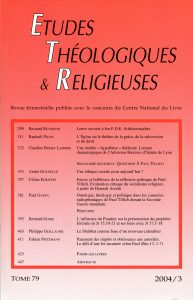En réaction critique à la définition du Shabbat comme « temple dans le temps » proposée par Michaela Bauks(1), Philippe Guillaume inscrit le Shabbat du septième jour dans le contexte historique perse. Il montre ainsi que le shabbat structure un calendrier inspiré du modèle zoroastrien, dont la particularité est de célébrer une ère nouvelle, et que ce calendrier est probablement le calendrier de 364 jours défendu au IIe siècle av. J.-C. par le Livre des Jubilés.
1 M. BAUKS, « Le Shabbat : un temple dans le temps », ETR 77 (2002/4), p. 473-490.
As a critical reaction to the definition of the Sabbath as « a temple in time » proposed in a recent article by Michaela Bauks, Philippe Guillaume analyses the Sabbath in the context of Persian history. He shows that it is the structure of a calendar based on the model of the Zoroastrian calendar whose specificity is to celebrate a new era, and that this calendar is probably the 364 day calendar which is to be found in the Book of the Jubilees (2nd Century B. C.).
p. 403-410
Auteur
GUILLAUME Philippe
Philippe GUILLAUME est professeur d'Ancien Testament, Near Eastern School of Theology, Beyrouth
